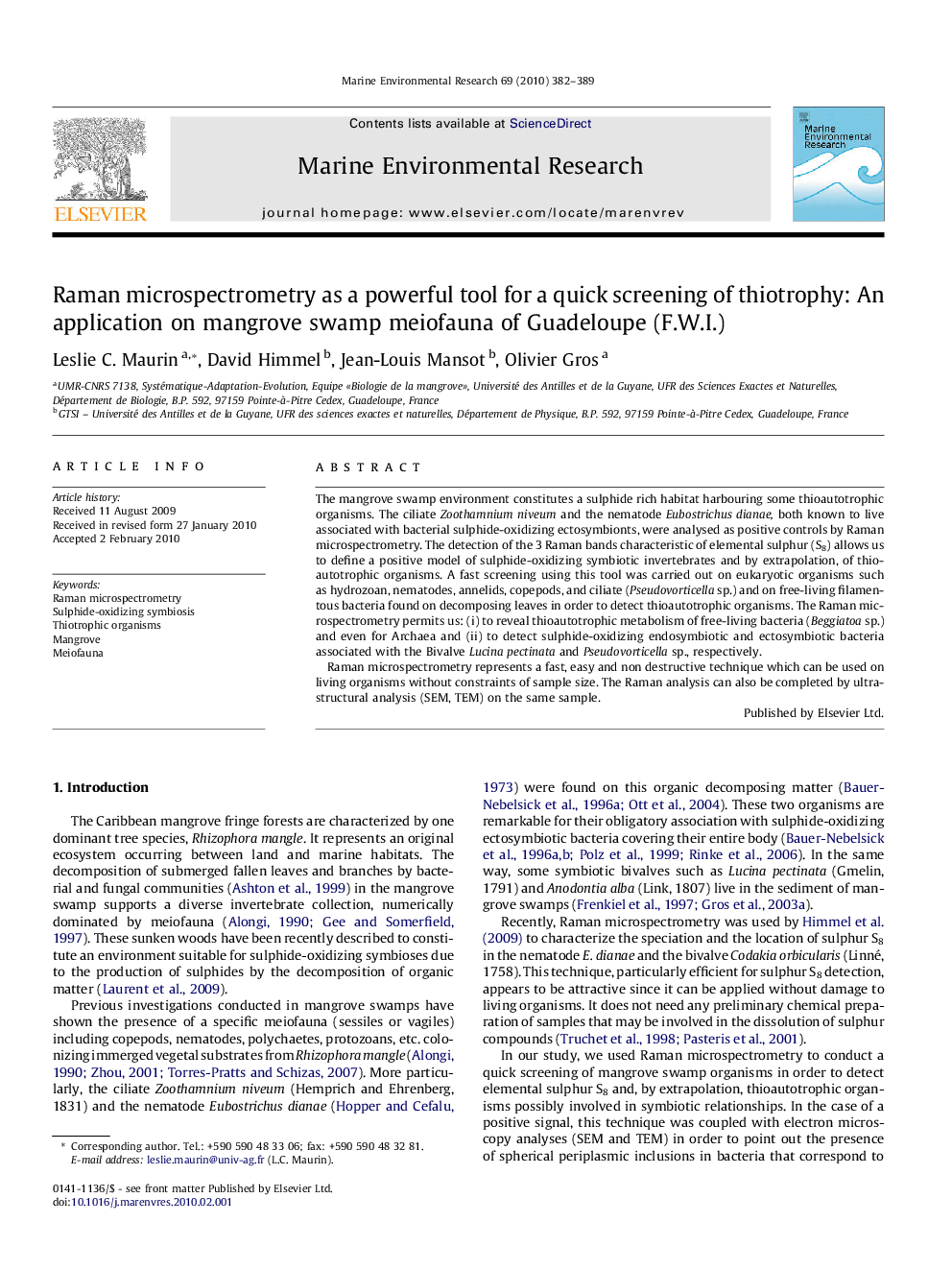| Article ID | Journal | Published Year | Pages | File Type |
|---|---|---|---|---|
| 4551300 | Marine Environmental Research | 2010 | 8 Pages |
The mangrove swamp environment constitutes a sulphide rich habitat harbouring some thioautotrophic organisms. The ciliate Zoothamnium niveum and the nematode Eubostrichus dianae, both known to live associated with bacterial sulphide-oxidizing ectosymbionts, were analysed as positive controls by Raman microspectrometry. The detection of the 3 Raman bands characteristic of elemental sulphur (S8) allows us to define a positive model of sulphide-oxidizing symbiotic invertebrates and by extrapolation, of thioautotrophic organisms. A fast screening using this tool was carried out on eukaryotic organisms such as hydrozoan, nematodes, annelids, copepods, and ciliate (Pseudovorticella sp.) and on free-living filamentous bacteria found on decomposing leaves in order to detect thioautotrophic organisms. The Raman microspectrometry permits us: (i) to reveal thioautotrophic metabolism of free-living bacteria (Beggiatoa sp.) and even for Archaea and (ii) to detect sulphide-oxidizing endosymbiotic and ectosymbiotic bacteria associated with the Bivalve Lucina pectinata and Pseudovorticella sp., respectively.Raman microspectrometry represents a fast, easy and non destructive technique which can be used on living organisms without constraints of sample size. The Raman analysis can also be completed by ultrastructural analysis (SEM, TEM) on the same sample.
